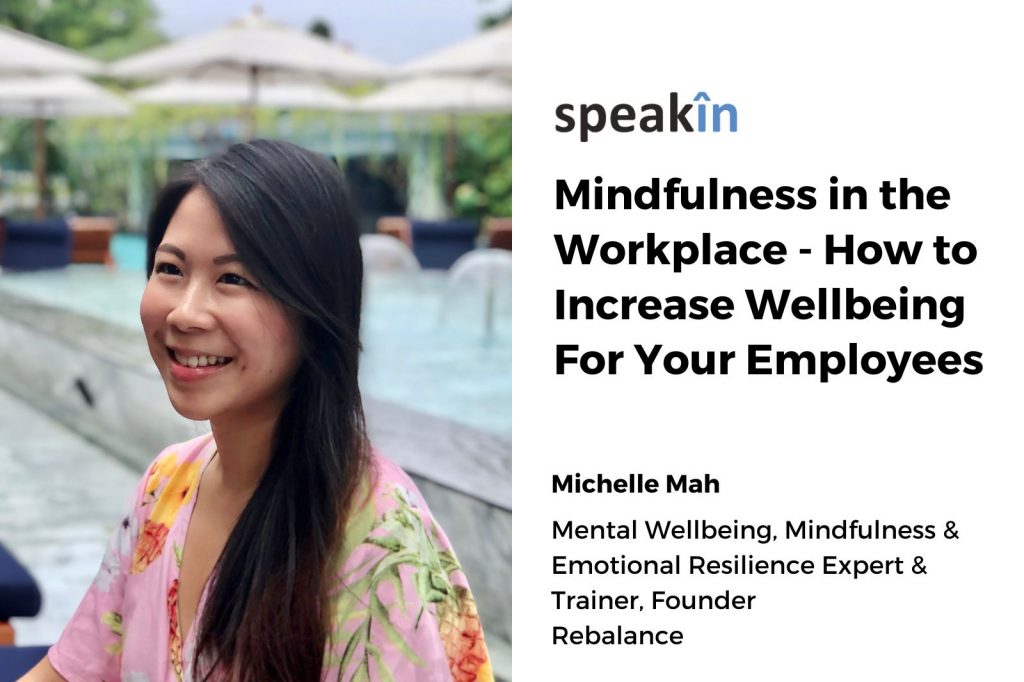Mindfulness in the Workplace – How to Increase Wellbeing For Your Employees

How can you put mindfulness into practice? To begin, simplify your job focus for maximum efficiency. You may do this by planning daily duties, knowing what calls you have coming up for the day, and understanding what meetings and projects need to be finished. Next, include mindfulness meditation in your daily routine. You can make this using applications like Headspace, which includes bite-sized reflections for hectic schedules that are particularly geared for various settings. Finally, after working on a job or project for a lengthy amount of time, consider conducting “work intervals.” Allow yourself 10 minutes to step away from the computer. This activity refocuses your thoughts, allowing you to return to the project refreshed.
These are just a few actual ways to practice mindfulness at home and work. Continue reading to learn about the other benefits of incorporating mindfulness into your daily routine to increase productivity at work!
Stress Reduction
Mindfulness in the workplace is a trendy issue among organizations to help reduce stress, which is a leading cause of employee disengagement and may also impede productivity. According to the European Agency for Safety and Health at Work studies, stress is responsible for over half of the 550-million working days lost due to absenteeism each year. Furthermore, 80 percent of people report feeling stressed at work and needing assistance learning how to handle it.
Google, General Mills, Adobe, Goldman Sachs, Aetna, Mayo Clinic, and Target all have structured mindfulness programs to encourage employee participation and stress reduction to battle emotions of stress.
According to a recent Paychex poll of over 2k employees, workers are worried by reasons both within and outside of work, like balancing work and personal life, job security, workload, and other people-related difficulties. As a result, they have adopted mindfulness as a critical method for combating work-related stress.
Absorption Of New Info
Studies have shown that allowing your brain to properly take a break from problem-solving, critical thinking, and gaining new abilities has improved future learning and creative potential. Conversely, skipping or refusing to take breaks can increase stress, tiredness, and stale thinking. This is especially true for undertakings or jobs that need prolonged concentration.
Adaptability
It is critical to be able to adjust fast and efficiently in work. It means you can adapt fast to new conditions and manage different demands. The more you practice and expose yourself to new methods of doing things, learning, and developing confidence in the face of uncertainty, the more adaptable you will become. Adaptability is important in leadership success and is often found in leaders who can manage altering priorities and are willing to modify their perceptions and beliefs.
Problem-Solving
Problem-solving is the capacity to clear the clutter from the untrained mind; it improves focus, which leads to the untying of problem-solving notes. Another way mindfulness may help you solve problems is by removing distractions and providing you with a fresh perspective. When you are amid a difficult situation and practice mindfulness, you may be able to absorb the information in a new and different way required for a resolution.
Facilitates Creativity
Divergent thinking, or generating a plethora of fresh ideas, is a key component of creativity. Practicing mindfulness to boost creativity at work encourages you to think more creatively than normal. Mindfulness aids in the liberation of your brain from distractions. This properly improves your capacity to see the world through new eyes. Fundamentally, creativity is just the result of taking a different method from a new viewpoint.





